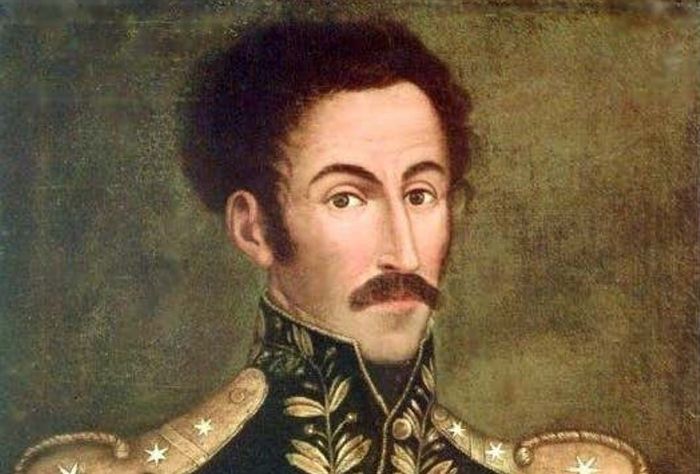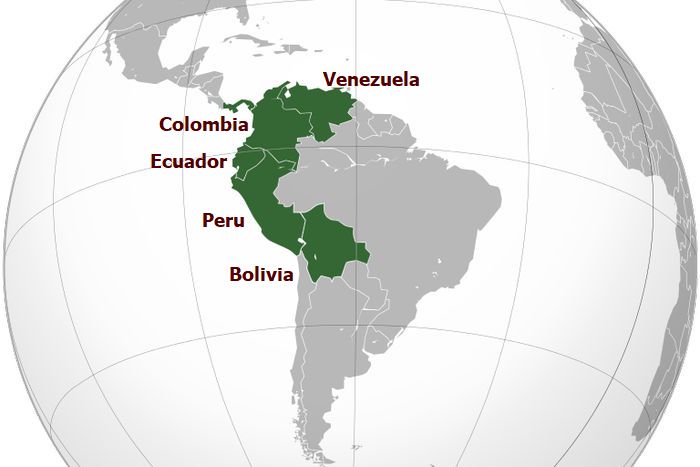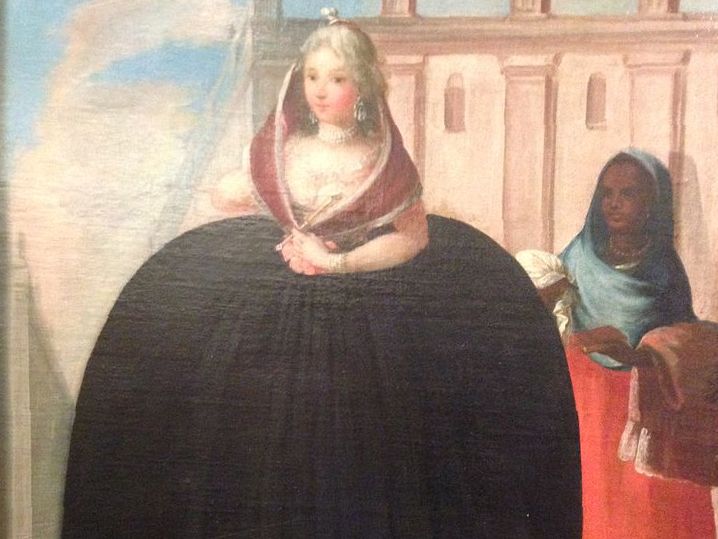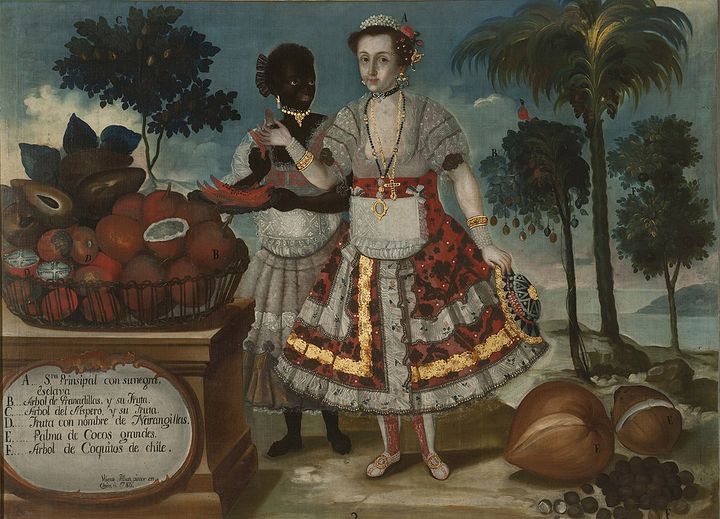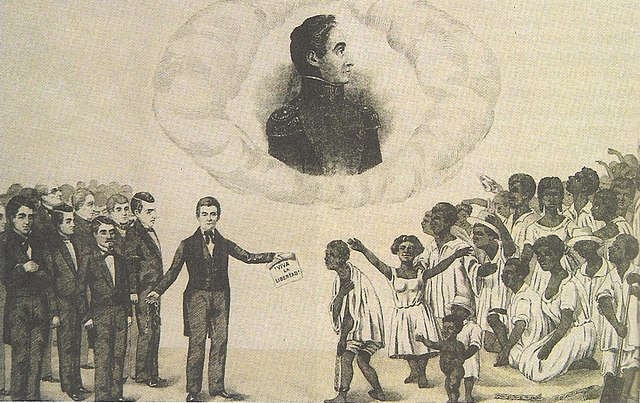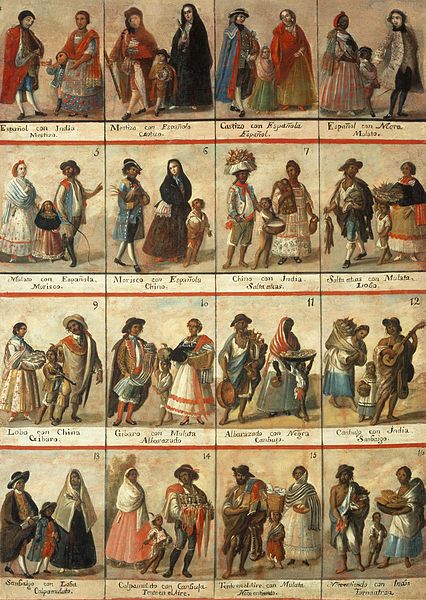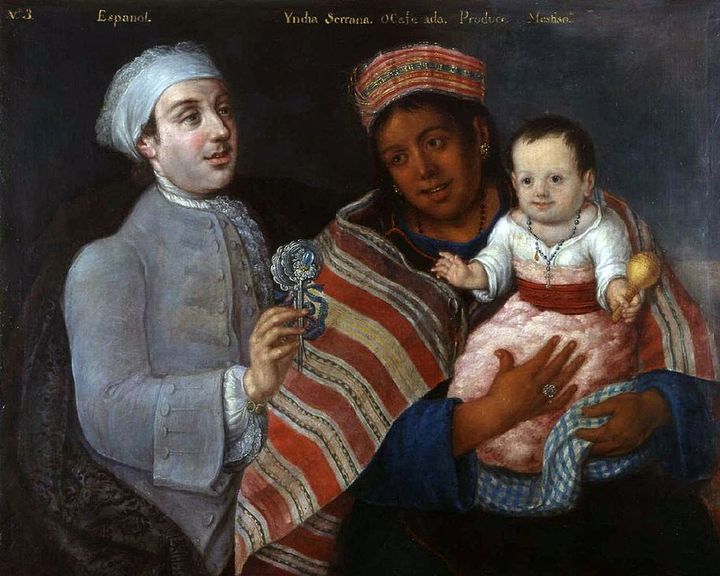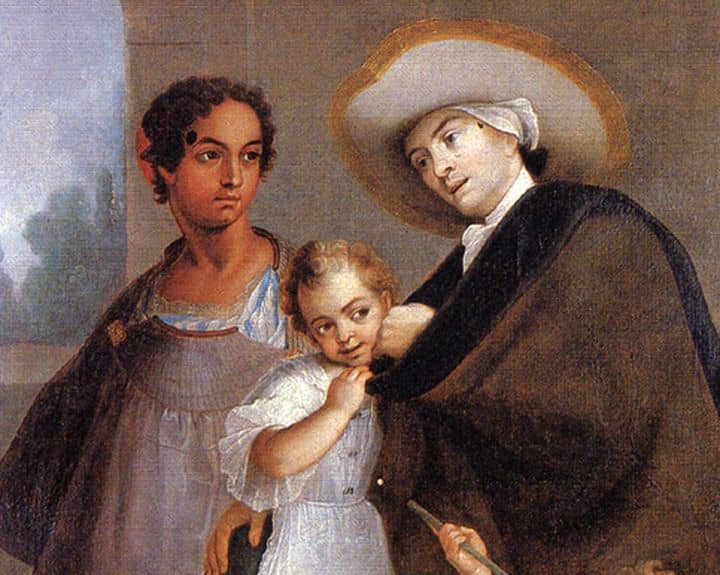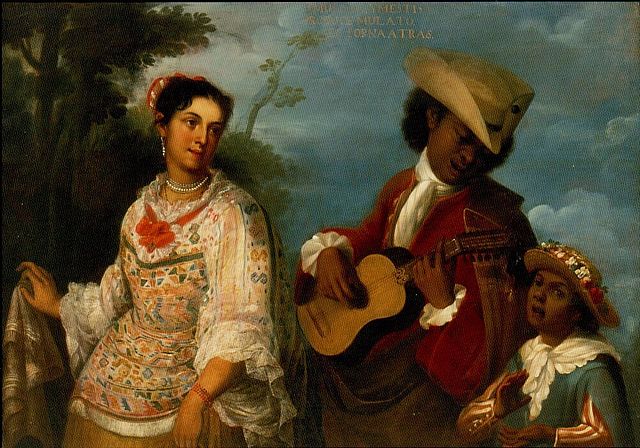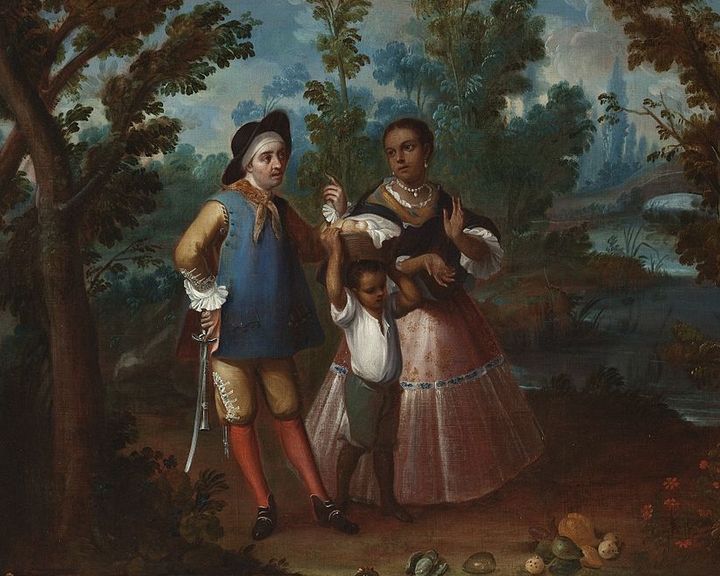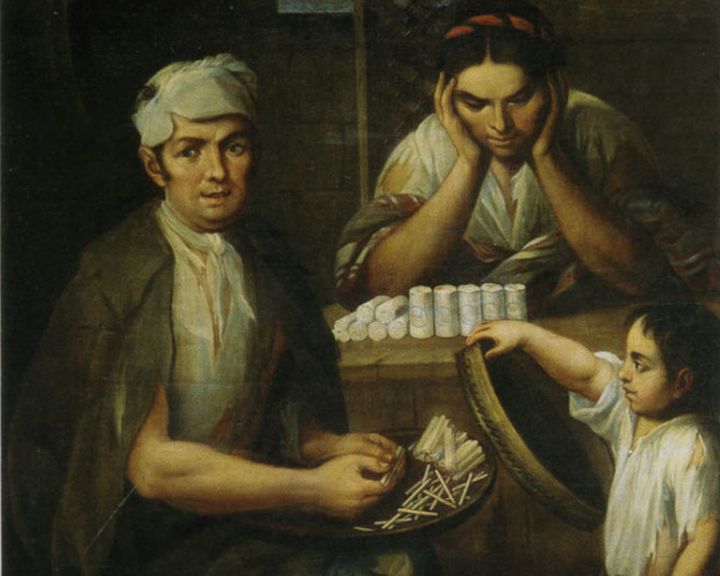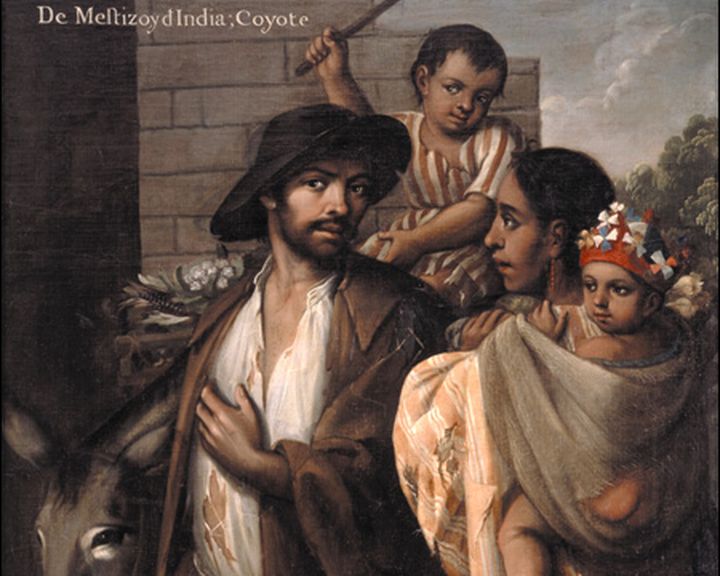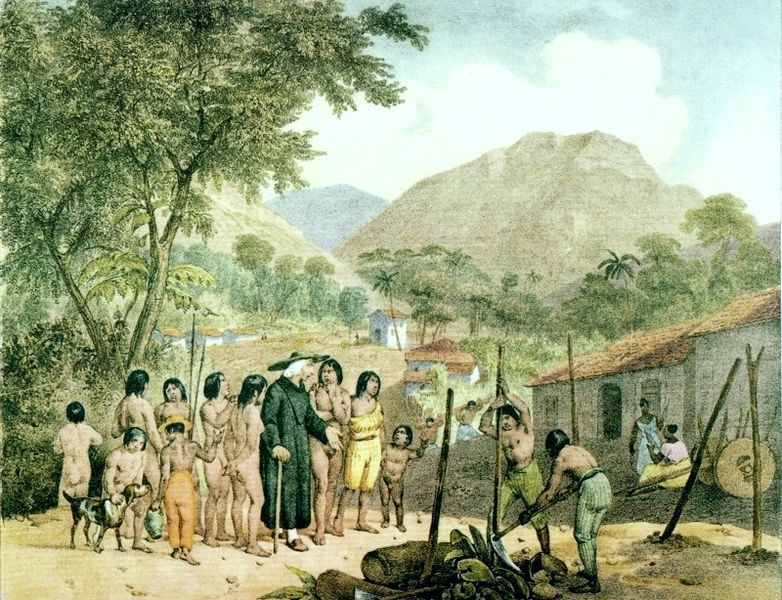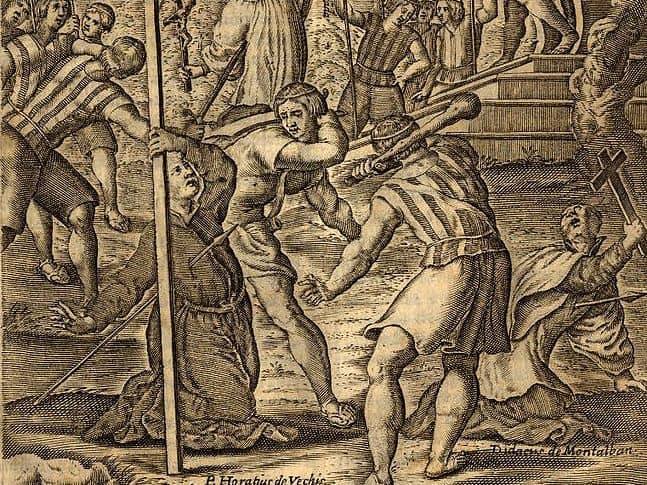There are statues of Simon Bolivar all over the world -from Washington and Paris to Tehran. Netflix has a series about him, and the man is considered a hero in South America. So what exactly did Simon do to earn all the praise?
Well, here are Simon Bolivar’s four greatest accomplishments:
1. Simon Bolivar’s greatest accomplishment: Freeing five countries from Spanish rule
Simon Bolivar’s greatest accomplishment, numero uno, is freeing the Spanish colonies.
Simon freed five South American countries in the 1800s. He freed his natal Venezuela, plus Colombia, Ecuador, Peru, and Bolivia.
For that, he has repeatedly been called “The George Washington of South America.”
The stage
It was 1810, and Napoleon Bonaparte, the French emperor, was invading continental Spain.
That was great news for Spain’s colonies in the Americas. While Spain was busy fending off its own invasion, the colonies could revolt.
Spain had divided her vast territories in the Americas into four viceroyalties. That way, they could be administered better.
The Viceroyalty of New Spain still controlled most of North America. The other three viceroyalties were in South America. The hero of our present article, Simon Bolivar, freed two of the latter: the viceroyalties of New Granada and Peru.
The viceroyalty of New Granada falls

Simon was born in Venezuela, which was part of the Viceroyalty of New Granada.
Simon belonged to a wealthy family and had been educated in Europe. There, he picked up the revolutionary ideas of the French.
He returned to Venezuela in 1807 and joined the independence movement. In the following years, Venezuela declared its freedom several times. Each time, it established its own government, ousting the crown’s officials. But each time, the crown regained control.
By about 1814, Simon had become Venezuela’s main revolutionary leader. His army battled the royalists plenty of times. Eventually, though, he realized that he had a better shot at winning if he switched battlegrounds.
The Spaniards were expecting trouble in Venezuela. While in neighbouring Colombia, he could catch them by surprise. Even better, the capital of the viceroyalty was in Colombia.
So Simon Bolivar pulled off quite a feat. He crossed the imposing Andes Mountains, which separate Venezuela and Colombia. And he did it in the worst possible season through a pass everyone thought impossible to cross.
He surprised the Spaniards at the other side and freed Colombia. With the viceroyalty weakened at its heart, he rode back to Venezuela and freed it.
Inspired by his success, the Panamanians declared their own freedom. That meant that three out of the four territories of New Granada were now free.
Simon Bolivar rode to the fourth, to Ecuador, and freed it too. With that, the Viceroyalty of New Granada fell.
Now the viceroyalty of Peru falls
But the Spaniards still had one powerful viceroyalty left in South America: the Viceroyalty of Peru. So Simon set off and freed it.
Then, he rode farther south and battled the Spaniards for Bolivia, their very last stronghold.
Bolivia had been part of the third viceroyalty. While Bolivar had been freeing the other two viceroyalties, Argentine general Jose de San Martin had brought down this one. All that was left of it was Bolivia. So Simon swept it and freed it.
Thus, by 1825 South America was free of Spanish rule.
So that was Simon Bolivar’s greatest accomplishment, and the one he is most remembered for: freeing five countries. Without it, his three other great achievements would not have been possible.
Read more. Simon Bolivar in 15 facts: get to know the South American Liberator
2. Simon Bolivar’s second greatest accomplishment: Abolishing slavery
Not many people are aware of this other great accomplishment of Simon Bolivar’s.
Simon, despite inheriting thousands of African slaves, was an abolitionist. In 1826, he wrote:
“Legislators! Slavery is the infraction of all laws. (…) A man a property! An image of God under the yoke, like a brute! (…)“
It was in Bolivia that Simon was able to abolish slavery promptly. After he liberated Bolivia, its citizens named their country after him. And they also asked Simon to write their constitution. Simon wrote it, and in it, he abolished slavery. By 1831, slavery was no more in Bolivia.
In the other freed territories, the task proved to be more difficult. It would take several attempts.
Simon first tried to end it in 1816, during one of his campaigns to liberate Venezuela, but it did not take.
Later, in 1819, during the Congress of Angostura, he pushed for the abolition of slavery once more. But he failed again.
Finally, in 1821, a compromise was reached. Since many of the ex-colonies depended heavily on slave labor, the patriots decided to abolish it in steps.
No new slaves were to be imported. And the patriots passed the law of “freedom of wombs.” According to this law, everyone born in the new republics from 1821 onwards was born free, even the children of slaves. Furthermore, the “owner” of the enslaved mother was to educate her free-born children.
With both measures -stopping import and free birth- the patriots expected the number of slaves to diminish on their own in the ex-colonies.
The process was not fast or easy, but 30 years later, all the republics Bolivar freed had abolished slavery.
Read also: These 7 unlucky European aristocrats ended up as Slaves in Africa, Asia, and North America
3. Simon Bolivar’s third greatest accomplishment: Equality under the law
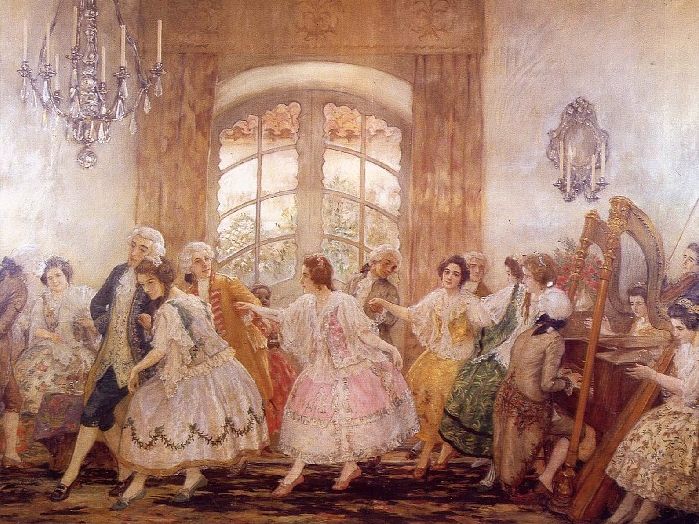
Independence brought many social changes. Simon Bolivar and the patriots declared the equality of all people under the law.
In doing so, they abolished the caste system that had been in place for three centuries.
The Spanish hierarchy: who is the boss
While Spain governed the colonies, there was no equality. There was a racial hierarchy established by law.
The Spaniards had a crystal-clear idea of who was on top: they were.
Only the people born in Spain (Peninsulars) had all privileges. They could be viceroys, governors, archbishops; they could own land, trade, etc.
Spaniards only married other whites. So their children formed the second legal tier of colonial society: the Criollos, aka whites born in the Americas.
But the crown did not fully trust the Criollos. Since they were born in the colonies, their loyalty could lie on the wrong side of things. They could revolt against Spain.
So they were never allowed to occupy the top positions of power.
Even so, they were granted some legal privileges. For example, they could own land and exploit it. They could also be appointed to middle-positions in the government, church, and the military. But they never held the highest positions.
Ironically, the Criollos ended up rebelling because of that glass ceiling. Simon Bolivar himself was a Criollo.
During colonial times, the upper-classes were all white.
The caste system
Upper-class whites may have only married other whites, but they had plenty of children outside of wedlock with Natives and Africans.
The people of mixed-blood were called ‘castes’ and made up the third tier in colonial society. They belonged to the lower classes and had few rights.
Within the caste system, not all mixed-blood people were equal. Their legal and social status depended on their exact ethnic make-up. For example, someone with a white parent and an Indigenous one was called a Mestizo.
Among the castes, Mestizos were the luckiest. They could sometimes hold low-entry positions in the church and military. That is, they could be priests and soldiers. But they could hold no middle positions. And they were banned from the government, universities, and most other institutions.
People who had a white and a black parent, mulattoes, fared worst. They had even fewer rights, were not accepted as priests, and they could be enslaved, like their black parent.
In the colonies, the mixing possibilities were endless. Say, a Mestizo and a Mulatto could have a child (a sambo), which in turn could have children with any other race. So by the 18th century, ‘caste’ paintings had appeared. They were charts that showed how to call a person according to the ethnicity of each of his/her parents.
Spaniards called themselves “People of reason.” Needless to say, the other races were considered “People without reason.” So, in general terms, the more ‘unreasonable’ blood a person had, the fewer rights they had, the more taxes they paid, the more forced labor they could be subjected to, etc.
And at the bottom of the pyramid
At the bottom of this legal hierarchy were the full-blooded Natives and Africans.
The indigenous population could own some land -like the whites- but only communal land granted by the king, not private properties. They were taxed the most. And although they were not technically enslaved, in practice, they were.
The people of African descent were outright enslaved.
Equality: the new system
When Simon Bolivar freed the colonies, he tried to establish a more egalitarian society. In one of his early speeches (c. 1816), Simon said:
“The nation is the common land to all who were born and live in it, regardless of caste, race, or religion.”
Once in power, Simon Bolivar and the patriots -although they were all Criollos- abolished the caste system. And they declared that everyone, of any race, was equal before the law.
They eliminated the astronomical taxes and the forced labor that the indigenous population had been subjected to.
And Simon created public schools that accepted children of all races and mixes. It was quite a novelty.
Don’t miss: What Did 15 of the Most Famous Romans Look Like?
4. Simon Bolivar’s fourth greatest accomplishment: Religious tolerance
But Simon Bolivar was not done yet, he also decreed religious freedom.
Until then, every person living in the colonies had to be Catholic. People who practiced other religions, like Judaism, were banned from entering the colonies.
And the crown had sent plenty of priests over the centuries to forcefully convert the Native population.
With independence came religious tolerance.
Simon and the patriots also abolished the Inquisition, which, believe it or not, still existed and had been happily arresting people and burning books up until 1820.
So religious freedom was his fourth great accomplishment.
And there you have it. Now you know which were Simon Bolivar’s greatest achievements. You know why he is famous and why his statue can be found in most major cities of the Western Hemisphere.
Read next: These are the 8 most spoken languages in the Americas -and you won’t guess half of them
More Articles
